Fitbit Sense review: good smartwatch limited by Premium subscription price
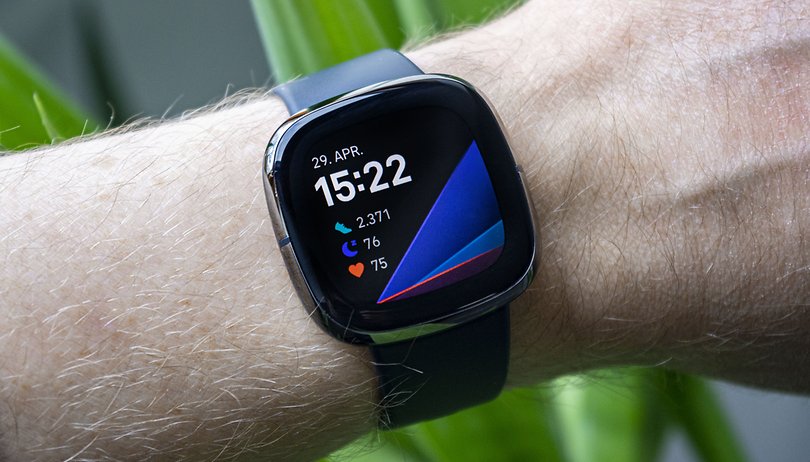

Do you want to get fit for 2022 and are you looking for a universal fitness smartwatch? The Latin name of Fitbit Sense stands for meaning, perception, awareness - sounds like a lot of "mindfulness". The fitness watch also brings the usual potpourri of sleep and activity tracking with it. Is the Fitbit Sense the ideal all-rounder to get you in shape in 2022, both physically and mentally? Here comes our test.
Update, January 14, 2022: Since December 2021, the Daily Readiness Score has been available for the Fitbit Sense, which determines a daily fitness from the current data. We tried the feature and updated the test report for you. You can find all the details about the daily form index in the "Tracking: from heart rate to sport to sleep" section. Spoiler: The new Daily Readiness Score could not change the test score of the Fitbit Sense.
Good
- Has many interesting mindfulness features
- Robust and functional design
- Multiple sensors provide a myriad of data
- Well-integrated app that is easy to use
Bad
- Expensive hardware
- Premium subscription is pricey
- Limited functionality without Premium subscription
- Closed ecosystem
- No wireless charging
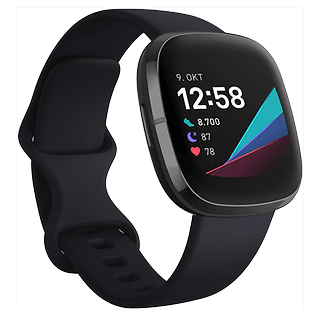
Fitbit Sense in a nutshell: Premium subscription cost is a deal-breaker
With the Fitbit Sense, you not only buy a smartwatch, but also an app with countless features, analysis dashboards, and plenty of mindfulness content. That sounds great, doesn't it? After all, the fitness watch costs a hefty $329 based on the recommended retail price. At various online shops, the Fitbit Sense can be picked up for approximately $200.
However, you are unable to experience the Fitbit Sense to its fullest at that price point, at least not forever. Picking up this fitness watch, you will be able to sign up for a Fitbit Premium subscription that is six months long. Once that expires, a wide range of functionality of your fitness watch will be locked, remaining inaccessible until you pony up more money for a subscription renewal.
Of course, you can save yourself all of that grief by ensuring you did not cancel the subscription earlier or do nothing after it has expired. In order to reactivate your subscription, Fitbit would gleefully deduct $10 each month for the next sixth months. All in all, the fitness smartwatch with a Premium subscription will cost a good $370 after one year of ownership, and if you extend that to two years, it would have cost you $490.
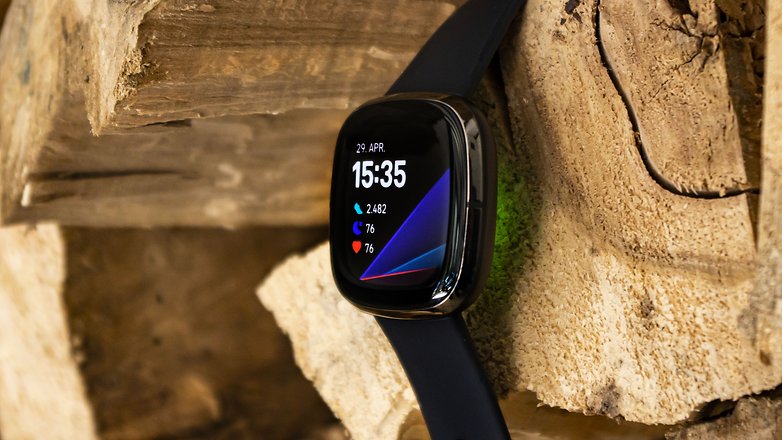
This is the main grip that I have with the Fitbit Sense and its Premium subscription. It is somewhat annoying, as though you are constantly pressured to make sure you have the Premium subscription, otherwise you would be wearing a rather expensive paperweight. It does not matter how nicely Fitbit reminds you to renew your subscription, it is still annoying each time a request comes in for you to part with your money.
As much as I like the Fitbit Sense — it's simply too expensive for what it offers. The workmanship is good, but not Premium. The range of functions is considerable, but those can also be found on devices from other manufacturers. And unlike Fitbit, Garmin and the rest do not rely on a closed ecosystem.
Fitbit Sense design and build quality
The design of the Fitbit Sense is functional. With the included silicone wristband, the sports smartwatch has the charm that is better suited to the gym than anywhere else and is thus less suitable for a nice evening out. But, and this must also be said clearly: If you're looking for a fitness smartwatch that just looks like a fitness smartwatch, then the Fitbit Sense fits the bill in every sense of the word with its chic and sporty design.
I liked it because:
- More robust than previous Fitbit offerings.
- Interchangeable wristbands.
- Very light form factor.
What I disliked:
- Somewhat boring albeit functional design.
- Standard wristband not very durable.
The wristbands can be swapped and are also compatible with those that the Fitbit Versa 3 uses. There are a few equally sporty alternatives from Fitbit if you want to increase your fashion options, priced moderately between $20 and $50. Amazon and other online retailers offer the usual smorgasbord of third-party manufacturers which range from sporty to a gaudy-looking rose gold option. The latter looks as if glitter confetti had been liberally sprinkled on said timepiece .
Basically, you should consider that you will need a new wristband sooner or later. After a few weeks of use, the included silicone wristband looked rather scuffed. A positive note: my skin can be rather sensitive to certain straps and wristbands, but I did not face any issue with this.
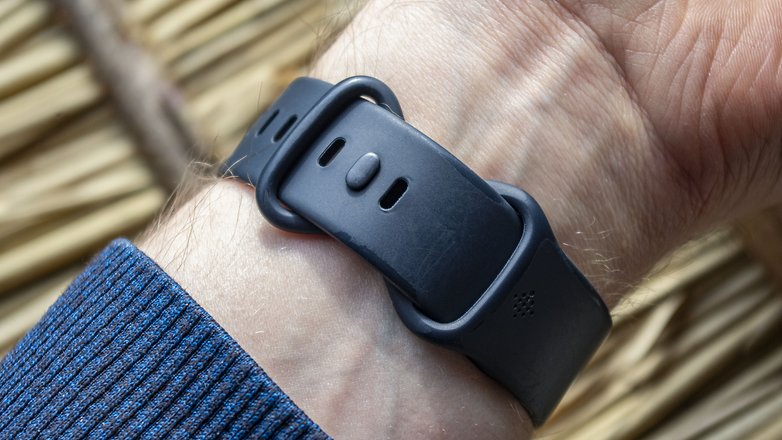
When it comes to the case's sturdiness, Fitbit has taken a step forward. The case is still made of aluminum, but that is only visible when seen from the back. The exposed front is now protected by a stainless-steel bezel - and laser-welded Gorilla Glass 3 keeps the touchscreen protected.
Not particularly fancy, but it is (largely) stable and light. The Fitbit Sense finds itself at home in the gym. However, it is far removed from a fashion accessory despite an abundance of third-party wristbands.
Display and touch-based operation
The design lacks any mechanical buttons, which means it will take some getting used to at first. However, you will not run into any issues since it should become second nature quickly. Rather than pressing the home button, you simply squeeze the case of the Fitbit Sense using your thumb (left) and index finger (right). You should be able to feel some haptic feedback which actually delivers the sensation of having actually pressed something.
I liked these:
- Decent resolution.
- Easy-to-read display in sunlight.
- Easy operation.
I disliked the fact that the:
- The user interface needs some getting used to.
Who remembers the pre-China era of smartphones, when HTC introduced squeeze controls with Edge Sense on the U11 and later got rid of actual buttons from the U12+ smartphone? This offers a pretty similar experience, where the sensor that detects squeezes (among other things) in this Fitbit is contained within a two-piece stainless-steel bezel, sporting a plastic strip in the center right and left.
Apart from that, there is, of course, the responsive touchscreen display, which can be swiped and tapped at. The menu navigation differs from Android Wear, but it is logical enough to work with, quickly becoming second nature.

The display itself relies on AMOLED technology, which is especially good for battery life with always-on mode enabled. The 1.58-inch panel's resolution is nothing out of the ordinary at 336 x 336 pixels. According to the manufacturer, it can hit a brightness level of up to 1,000 nits; and I can at least confirm that the display is easy to read under all lighting conditions.
Fitbit has been building smartwatches and fitness trackers for many years. Hence, it is no surprise that the display and operation work seamlessly. For first-timers dabbling with Fitbit, Wear OS, or Tizen users, the operation takes some getting used to.
Mindfulness against stress
Yes, mindfulness is the next big thing. At least since the coronavirus pandemic amplified this, where mental health is a major point to focus on, and apps like Headspace continue to gain traction. What does Fitbit offer in this department?
What I liked:
- Lots of features surrounding mindfulness.
- Practical breathing exercises.
What I disliked:
- Confusing array of premium / non-Premium features.
First of all, the Fitbit Sense automatically measures electrodermal activity, which provides information about the wearer's stress level. This allows the Sense to also log the so-called stress management index as a value between 0 and 100. However, if you want to check it out in greater detail, you will need a Fitbit Premium subscription.
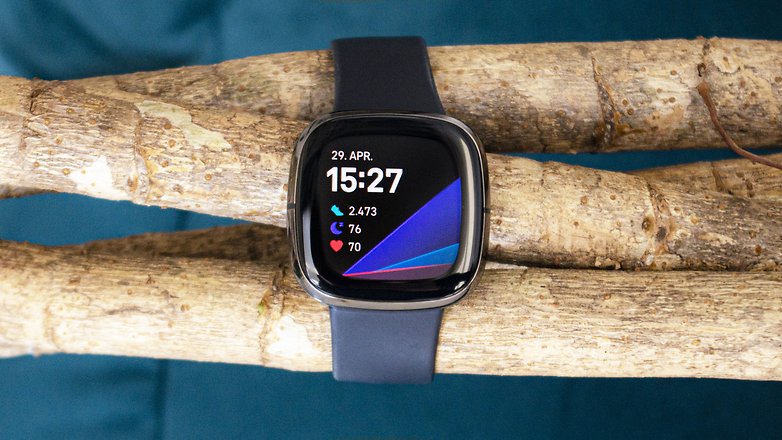
In addition to automatic background tracking, the Fitbit Sense also offers an EDA scan, during which the wearer is supposed to relax for two minutes while placing their hand on the display — or rather, on the aforementioned two-piece stainless-steel bezel.
The smartwatch then logs EDA responses as a stress indicator; even just before the deadline of this review, I managed to log a zero reading. It also takes heart rate variability into account, which for me, was a very low 36 milliseconds.
However, a Fitbit Premium subscription is once again required to analyze this data on a daily/weekly basis. For those who want to work on their mental health, you are expected to fork out for this subscription. A single English-language, six-minute mindfulness exercise is free; while the other 90 over sessions are going to cost you!
On the Fitbit Sense itself, there is also a guided breathing exercise that lasts between two and ten minutes and prompts you to breathe in and out, either visually or via the vibration motor. Just as with other physical activities, the various mindfulness and breathing exercises can also be used as a benchmark as you work towards your weekly mental health goal.
The Fitbit Sense offers numerous well-implemented features around the topic of mindfulness. Unfortunately, many of them are only available with a Fitbit Premium subscription. Without the subscription, the overall package feels like my neighbors' hedge, which I trimmed at the tender age of four out of goodwill.
Tracking: from your pulse to sports and sleep
The Fitbit Sense has an impressive array of sensors that are suitable for various sporting activities and everyday life situations, that's for sure. But how accurate is the data and is it useful enough?
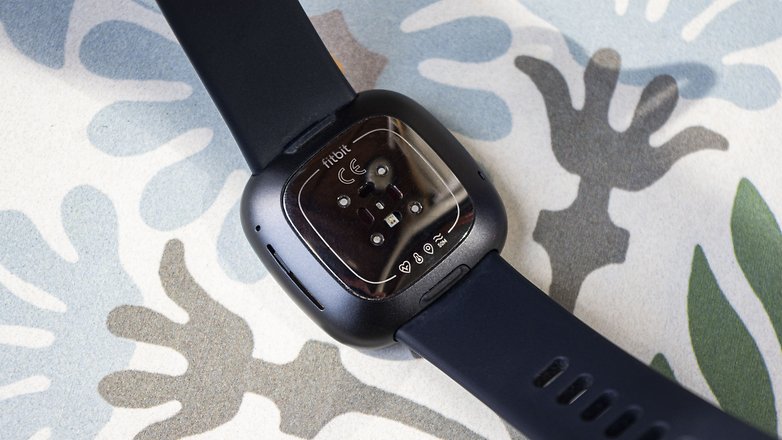
What I liked:
- Numerous sensors that pick up plenty of readings.
- Accuracy for endurance athletes.
What I disliked:
- Closed ecosystem.
- Anything extras requires more payment.
Activity tracking
Tracking my workouts was an intuitive exercise. All I needed to do was to select "Workouts" in the menu, choose the appropriate discipline from the dozens of available sports, wait for the GPS connection if required, and press "Play".
During the current workout, you can switch between different displays, such as current heart rate or distance covered, doing so by swiping your finger horizontally. I found it a minor irritation that Fitbit does not allow me to program personalized gestures or combinations of different metrics simultaneously, such as my pace and heart rate.
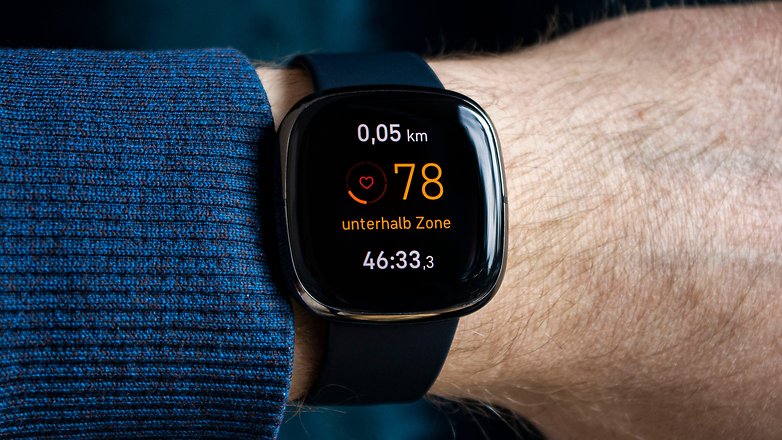
Heart rate
Pulse sensors on the wrist record the heartbeat optically. This is a straightforward process, but has its drawbacks. For any activity that requires bent or tight wrists, blood flow is not visible all the time, reducing the accuracy of such readings. This is not a Fitbit problem, but applies to all optical pulse sensors that are seen in Apple, Garmin, and Xiaomi devices.
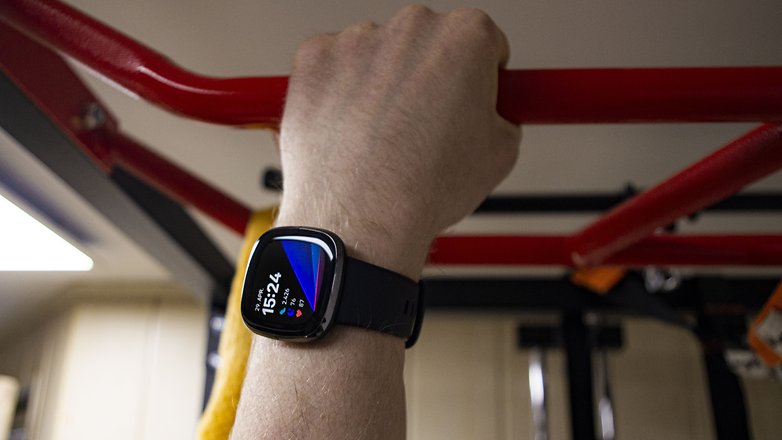
For example, when you go jogging, the wrists are relaxed — allowing the Fitbit Sense to deliver accurate results with a negligible degree of variance. The situation is different when it comes to strength training. Even holding dumbbells during leg training is enough to significantly distort the results in comparison to using a chest strap. The pulse recorded by the Sense is clearly too low. Let us not even talk about burpees and other more challenging exercises that require plenty of exertion.
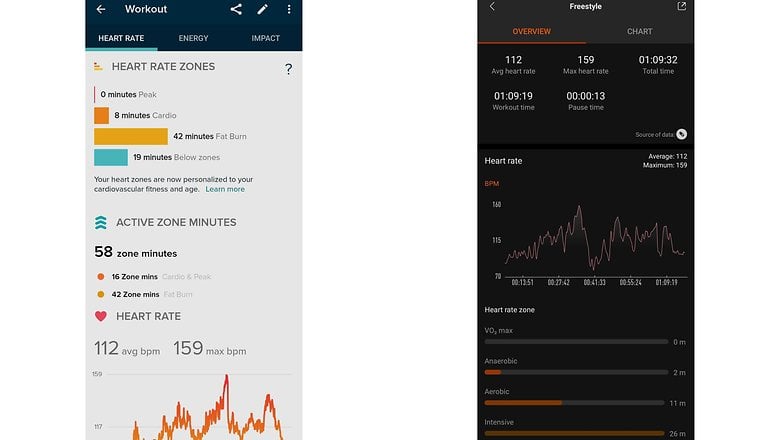
When it comes to endurance sports, it's more important to keep an eye on your heart rate zone; and for that, the Sense provides sufficiently accurate results. However, if you count your calories and want to use the Fitbit Sense to estimate the energy requirements of your HIIT workouts with burpees and the like, you'll be left out in the cold.
Many competitors offer the possibility to connect chest straps with the fitness smartwatch through an open ecosystem. Garmin has particularly led the way with a really wide range of accessories.
Sleep
Like every smartwatch, the Fitbit Sense also tracks your sleep. Unfortunately, due to the lack of a sleep lab in the editorial office, we can only compare our sleep quality with the sleep log gleaned from the Fitbit app. In each case, we have the advantage of using other trackers for comparison, such as a Xiaomi Mi Band 5 and an Oppo Watch.

In any case, the results of the various trackers match roughly, and the Fitbit Sense also recording nocturnal wake phases. It is also interesting that the Sense depicts the oxygen saturation in the blood during the night - so it could be possible to detect a lack of oxygen due to sleep apnea or other similar conditions.
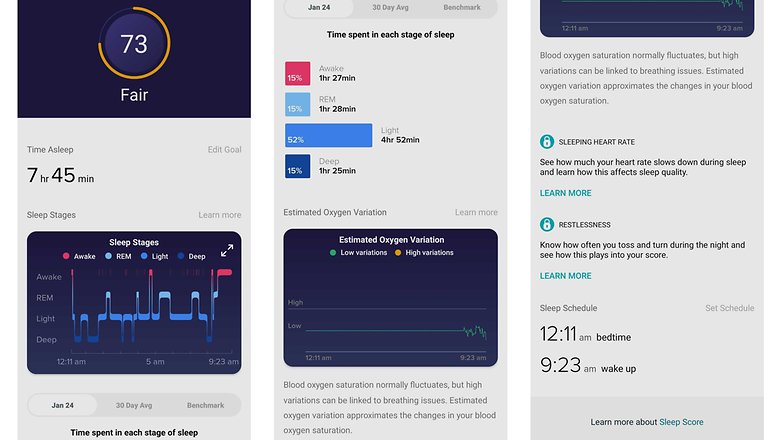
But if you want to see your nightly heart rate or data on how much tossing and turning you make in your sleep, you'll have to be prepared to pay. This data is reserved for premium users, which - I repeat myself - is simply cheeky for a tracker that already costs more than $300.
Daily Readiness Score: How fit am I today?
The Daily Readiness Score is also reserved for premium users. Here, the Fitbit Sense combines activity level, sleep and heart rate variability over the past few days and uses this to calculate a daily fitness level. After a few weeks of testing, it looks like daily activity minutes have the biggest impact on the Daily Readiness Score.
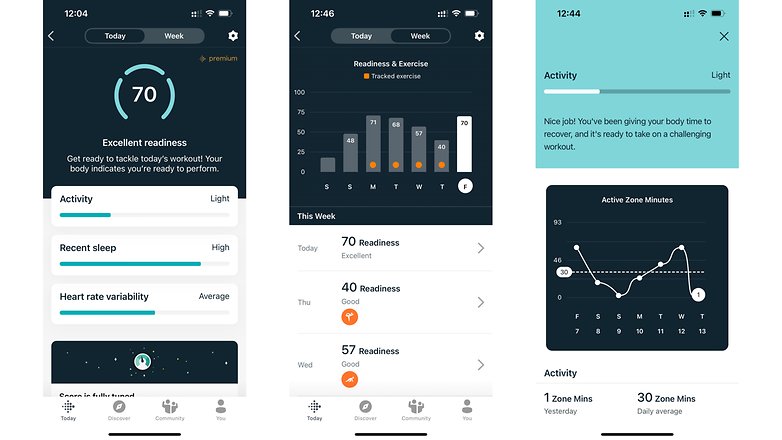
On the screenshots above, you can see the three factors that influence my Daily Readiness Score in the overview on the left: little activity, good sleep and average heart rate variability. The middle screenshot shows that the value for the daily form on Friday shot up significantly. You can also see the reason for this in the screenshot on the right: After a week of increasingly hard workouts, it was time for a more relaxed yoga session on Thursday morning.
Unfortunately, I can hardly determine the influence of sleep on my readiness index - but I am also lucky enough to sleep fairly consistently well. It looks similar with the heart rate variability. The value was between 67 and 81 Monday through Friday; only on Wednesday there was a 44 ms hole. However, there is no disproportionate drop in my Readiness Score to be seen here.
The bottom line is that the daily form index prominently advertised by Fitbit is no reason to buy the Fitbit Sense - especially since the value can only be read out with a premium subscription. I also couldn't find a Fitbit watch face that prominently displays the "so important" value. I haven't even found any way to view the value on the smartwatch at all. So if you want to know before training: “How hard should I train today?” you have to look at your smartphone.
If you want to count your steps and record your sleep with the Fitbit Sense and check your heart rate during endurance sports, you shouldn't miss anything here. However, the competition in the same price range offers ambitious athletes more options via a larger or open ecosystem.
Battery lasts almost a week!
Yes, you can make calls with the Fitbit Sense, it displays notifications on the wrist, has an integrated payment service (unfortunately it works only with a credit card), and there is a bunch of (more or less useful) apps. Still, the battery life is many times better than the average smartwatch powered by Wear OS or Watch OS. According to the manufacturer, the Fitbit Sense lasts for six days.
I liked the:
- Battery that lasts almost a week.
- Fast charging feature.
What I disliked:
- Proprietary charging port isn't even compatible with other Fitbit devices.
In reality, I mostly got by for around five to six days with about an hour of activity tracking a day and the Always-On display disabled. Those who enable the Always-On Display will probably have to contend with a shorter battery life.
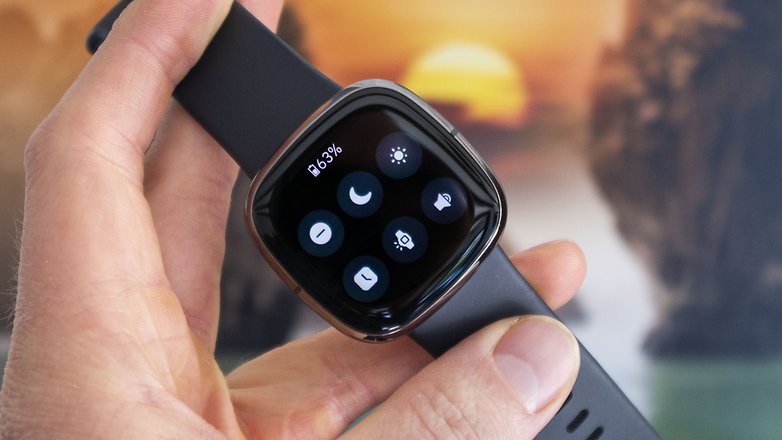
Another pleasing feature is the fast charging function: if you are shocked to discover in the morning that there is insufficient juice to last the day, plug it in for just a dozen minutes and that should be more than enough to help you wear it until at night. According to the manufacturer, it takes about 40 minutes to go from 10 to 80 percent. I didn't bother to check out this claim, but the battery was definitely full again within an hour.
It may not be as smart as its Wear OS or Watch OS counterparts but in return, the Fitbit Sense lasts for almost a week in everyday use. That is fun.
Final verdict
Yes, the Fitbit Sense is a really versatile fitness smartwatch that is a good choice for many customers. However, there are also many, many limitations attached to it. Those who want the full range of features have to spend another $10 monthly on top of the $329 asking price. In addition, it offers a closed Fitbit ecosystem that means you can't even maintain a connection to Google Fit or a chest strap.
Looking for an alternative? Here's our list of best Android and iOS smartwatches
The Garmin Venu and its recently introduced successor, the Venu 2, offer a similar range of functions for the price without any subscription, mind you. However, those who are more serious can take advantage of the manufacturer's wide range of accessories, from waterproof triathlon chest straps to cadence sensors for cycling. For other alternatives, I recommend you take a look at our "Best of" smartwatch list or our "Best of" fitness tracker list.
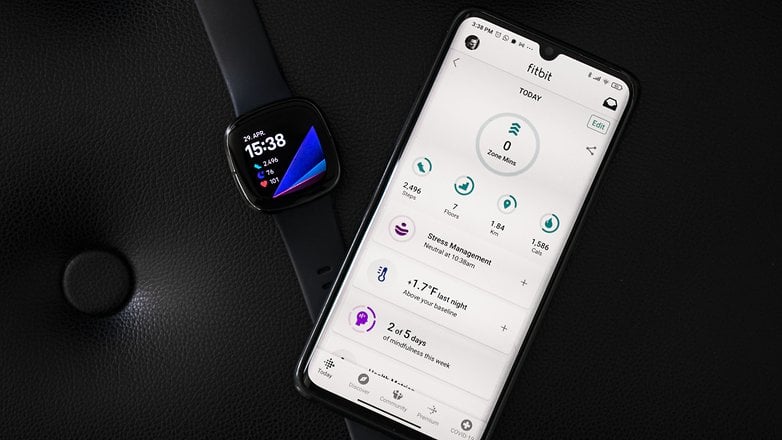
And if you are now convinced that the Fitbit Sense is the right choice for you, then buy it using the following link. You will not incur any additional costs, but you will help us to write many more independent reviews for you in the future.
A final note: The Fitbit Sense is currently available at various online retailers for approximately $200. In contrast to Amazon and other sites, the Fitbit website offers the possibility to sign up for a six-month trial subscription for Fitbit Premium. This option is not available at other online shops, but you can also sign up for the trial via the Fitbit app itself.
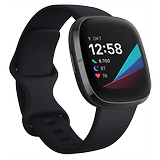






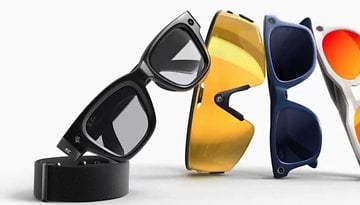
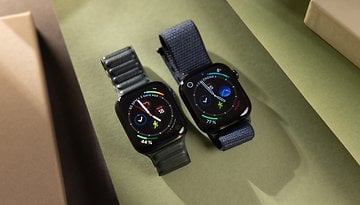
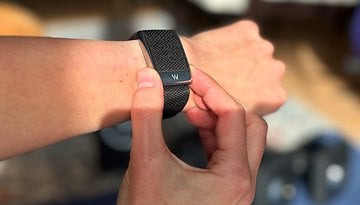
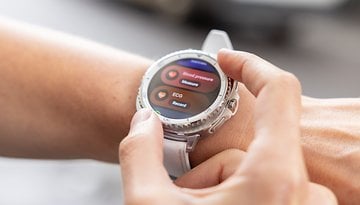
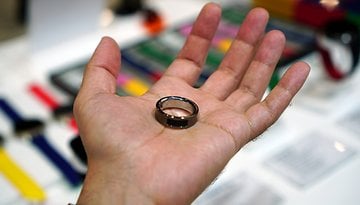
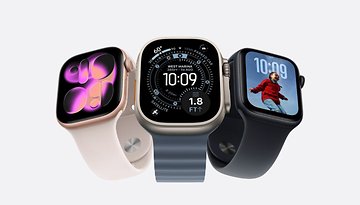


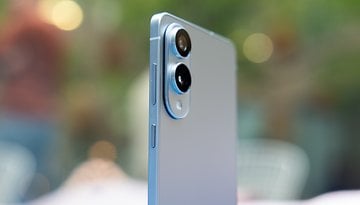
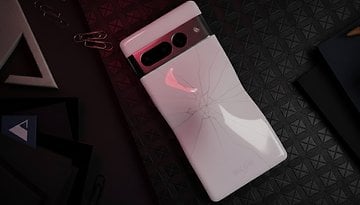
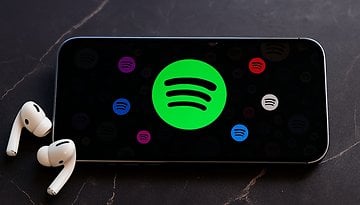
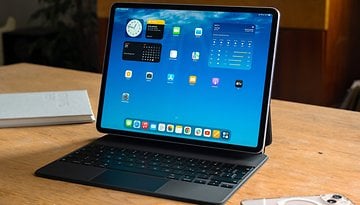


Wow I like such a type of detail review, Fitbit this smartwatch is very eye catchy & also a great review keep it up.
-
Admin
-
Staff
May 4, 2021 Link to commentThank you for the kind feedback!